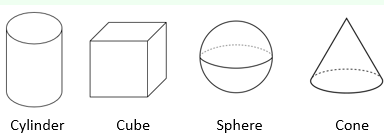What is the iReady Test?
The i-Ready Diagnostic is a computer-adaptive assessment for K–12 students, administered three times a year. It’s untimed and covers both Math and Reading, adjusting the difficulty of each question based on how students respond. Aligned with Common Core Standards, it helps teachers pinpoint strengths and learning gaps so they can tailor instruction effectively. Families who want extra support can also purchase our dedicated i-Ready PrepPacks in the i-Ready Shop.
Key Features of iReady Test:
- Administered 3 times per year
- Untimed assessment
- Computer-adaptive
- Covers Math and Reading.This test is aligned to the Common Core State Standards, ensuring that it measures skills and knowledge relevant to your child's grade level and supports kindergarten readiness by assessing foundational learning skills.
iReady Math Test Breakdown
The iReady diagnostic math test takes approximately 50 minutes for grades K-1 and 90 minutes for grades 2-8 and contains between 60-90 questions. As the test is adaptive, the number of questions varies with each student's performance.
The assessment presents students with math questions on a number of different topics.There are four domains of mathematics that the test focuses on, and we will take you through them now, showing samples of what questions might look like in each domain.
iReady Math Test Sample Questions
Let's look at some sample questions to give you an idea of what to expect on the iReady test.
Algebra and Algebraic Thinking
A common type of question you will find on the iReady Diagnostic Math test is in the topic of algebra or algebraic thinking. These include basic arithmetic skills such as word problems, equations, number patterns, and more. The concepts and problems are in accordance with the given grade level of the student and his or her performance on the test.
TestPrep-Online Tutor's Tip:
"I always tell my students to think of this like counting hops on a number line. Start at 5 and hop: 5, 10, 15, 20, 25, 30, 35, 40, 45, 50, 55, 60, 65, 70. Count each number you land on—that's 14 hops total! "
When you need to count by a certain number, write out the sequence and count the total numbers. Don't forget to include the first and last numbers!
Want More iReady Practice Questions
Our iReady practice test packs have hundreds of questions!
The iReady question is a foundational exercise that lays the groundwork for more advanced algebraic concepts, which will be further developed and refined in a few grades when students tackle more complex equations and functions. Let's look at a more advanced alegbra question.
TestPrep-Online Tutor's Tip:
"I teach students to think "opposite operations." If 7 is multiplied by p, do the opposite—divide 175 by 7. Always check your work: 7 × 25 = 175 ✓"
Numbers and Operations
Now, let's move on to the next sub-topic, Numbers and Operations: Another skill you will need for the test is the four basic operations—addition, subtraction, multiplication, and division—as well as the ability to operate with varying types of numbers relevant to the student’s level, such as fractions, decimals, and integers.
TestPrep-Online Tutor's Tip:
"I show students that converting fractions to decimals means dividing the top number by the bottom number. So 2/5 = 2 ÷ 5 = 0.4. Think of it as "2 out of 5 equal parts.."
Every child’s learning journey is unique—and we’re here to help.
Whether you need MAP Test Practice, a Free CAT4 Test Level E sample, free OLSAT questions, Renaissance STAR Testing tips, or a Free STAAR Practice Test, we’ve got you covered. Is this what you’re looking for, or would you like to try another test prep pack? Explore our range of resources below and choose the perfect fit for your child's educational needs.
TestPrep-Online Tutor's Tip:
"I always have students calculate each person's rate first. Daniel: 40 ÷ 5 = 8 pages/day. Isla: 120 ÷ 24 = 5 pages/day. Then find the difference: 8 - 5 = 3 pages/day."
Now that you are familiar with number and operations questions, let's move on to the next sub-topic, measurement and data:
Measurement and Data
The next domain we will look at includes both measurement and analysis of data. Depending on the grade level, this can involve reading rulers, calculating distance, converting units of measurement, calculating probability, familiarity with mean, mode, and median, as well as interpreting charts and graphs.
TestPrep-Online Tutor's Tip:
"I teach students to identify what they're comparing. Marathon distance (42 km) minus practice distance (39 km) = 3 km difference. Always subtract the smaller number from the larger one when finding "how much more."
When finding a difference, subtract the smaller number from the bigger number. If you want further guidance on how to support your 3rd grader in math we have a comprehensive guide and a downloadable PDF so you can asses your child's progress.
In this kind of question, you are given data regarding a sampling group and should use it to draw conclusions about the entire group. Notice that the conclusion you can make out of the sample is merely an approximation and cannot reflect reality correctly.
TestPrep-Online Tutor's Tip:
"I break this into steps: Find the "other" group in the sample (36 - 14 - 9 = 13 students), then scale up proportionally. Since 540 ÷ 36 = 15 times larger, multiply: 13 × 15 = 195 students. "
Geometry
The final math topic we will explore is geometry. This includes understanding and classifying two and three-dimensional shapes, calculating perimeter and area, familiarity with the properties of angles, and how to use all of these principles and others to solve word problems and shape diagrams.
TestPrep-Online Tutor's Tip:
"I have students feel different objects and describe their surfaces. A ball is completely round with no flat sides or edges—just like a sphere! A cube has flat sides, a cylinder has flat ends, and a cone has a point."
TestPrep-Online Tutor's Tip:
"I teach students to use a right angle (90°) as their reference point. 70° is slightly smaller than a right angle—about 3/4 of the way there. Compare each option to this mental image."
Explore iReady Math and Excel in Every Equation
Ready to excel in math? Our iReady Math Prep Pack is the key. Explore how it can boost your child's confidence and scores.
Our pack is designed to be engaging, interactive, and easy to use, making it the perfect resource for parents and educators who want to help their students achieve their full potential.
iReady Reading Test Breakdown
The iReady reading test, just like the math test, takes approximately 50 minutes in grades K-1 and 90 minutes in grades 2 – 8. You will be presented with extended passages. Students are asked questions about the text at various points.
The nature of the questions and the passages varies throughout the test, as we will now explore over a series of sample questions.
iReady Reading Test Sample Questions
Phonics/Phonological Awareness/High Frequency Words
The first category of questions we will look at includes three domains catered to the development of early literacy, and only students in K-2 (or those scoring at that level) will encounter such questions on the test. A 2nd or 3rd-grader who demonstrates a 3rd-grade reading level will cut short or bypass these questions entirely.
The first domain is called Phonics, which asks about the sounds of the English language and how they are represented with letters. Closely related to that is Phonological Awareness, which includes identifying syllables and the pronunciation of words. Finally, there are High-Frequency Words, which focus on the student’s familiarity with the most commonly appearing words in written English.
TestPrep-Online Tutor's Tip:
"I have students read each option aloud in the sentence. "The" is an article that points to a specific door. "There" refers to location, and "to" shows direction—neither makes sense here. "
Boost Your Child's Reading Confidence With Our iReady Test Prep Pack!
Give them the tools to succeed in the classroom.
iReady Reading: Phonological Awareness – 1st Grade
Identifying syllables in words
TestPrep-Online Tutor's Tip:
"I teach students to clap while saying words—each clap is a syllable. Te-le-scope (3 claps), Lux-u-ry (3 claps). Ta-ble (2 claps), Home-work (2 claps), Pres-ent (2 claps)."
Manipulating sounds in words
TestPrep-Online Tutor's Tip:
"I picked "shop" because it starts with the "sh" blend, just like in "shoes" or "shark." Listening for these sound chunks helps build strong phonics skills.
Try practicing "sh" words by saying them out loud and spotting them in storybooks. The more you hear it, the easier it gets."
Here are some 2nd-grade level phonics blend examples to build skills with the SH, CH, and TH sounds. Each one focuses on blends that appear at the beginning, middle, or end of the word.
SH Blend Practice:
- What word do you get if you change the beginning sound of "map" to "sh"?(Answer: shap – make it a real word: shop)
- What happens when you add "sh" to the end of "fi"?(Answer: fish)
- What do you hear in the middle of "wishing"?(Answer: sh)
CH Blend Practice:
- Start with the word "air." Now add "ch" to the beginning. What word did you make?(Answer: chair)
- What word do you hear when you add "ch" to the end of "pea"?(Answer: peach)
- What sound is in the middle of "teacher"?(Answer: ch)
TH Blend Practice:
- What word do you make if you change the beginning sound of "pin" to "th"?(Answer: thin)
- What do you get when you add "th" to the end of "ba"?(Answer: bath)
- What blend sound do you hear in the middle of "mother"?(Answer: th)
These examples help young learners recognize blend patterns, build decoding skills, and gain confidence when reading and spelling.
Vocabulary
Another category of questions you will face on the iReady at all levels aims to test your knowledge of vocabulary, understanding the meanings of words and their proper application.
They are defined as follows:
- High-frequency words: These are words that appear most frequently in text, regardless of the reader's ability. They are determined by analyzing large text corpora.
- Vocabulary: This generally refers to a broader set of words that students need to understand. They are selected based on various factors including grade level appropriateness, subject relevance, and academic importance.
TestPrep-Online Tutor's Tip:
"I explain that words can have multiple meanings. In sentence A, "head" means leader or person in charge. In B, "head" means to go somewhere (verb). In C, "head" refers to the body part (noun).."
Ready to sharpen your reading skills? Let's dive into the next question: "Using context clues to understand word meanings."
TestPrep-Online Tutor's Tip:
"I teach students to use context clues. The sentence talks about cocoa nibs giving chocolate its special taste and smell—something that makes it different or unique from other things. "
Our Family Membership covers every test your child might face. Stop searching. For less than the cost of two individual packs, you get:
♦ 12 months of unlimited test prep ♦ 3 profiles for personalized study ♦ Exclusive tips to keep you ahead
Finally, find what works.
Now that we've honed our context clue skills, let's get precise with our reading comprehension - Next up: "How to identify and apply supporting evidence from the text to answer questions". This important skill helps readers understand what they're reading and prove it with evidence from the text. Mastering this skill is essential for doing well on reading tests and for developing critical thinking skills. If you're a parent looking to support your child's reading comprehension development more broadly, we invite you to explore our comprehensive guide to reading comprehension. This resource offers valuable insights and practical strategies to help your child become a more confident and skilled reader.
Comprehension of Literature
We now move on to the reading comprehension portion of the test, beginning with literary texts. Here you will be given stories, poetry, or any kind of work of literature, and you must answer a series of questions designed to determine how well you understood and were able to analyze different elements of the text, considering, plot, characters, language, and other devices.
TestPrep-Online Tutor's Tip:
"I tell students to look for cause-and-effect relationships. The passage states the family was poor and Guddu had to work to support them. This directly explains why they traveled—for Guddu's job to earn money."
We've mastered finding details in the text! Now, let's explore the author's craft - Next up: "How authors use literary devices to create mood, tone, and atmosphere"
TestPrep-Online Tutor's Tip:
"I help students identify the author's purpose. The sentence creates emotional response (pathos) by emphasizing what Saroo lost, making readers feel sympathy for his situation despite his good fortune."
Comprehension of Informational Text
Like the previous category, here you will be given long passages to read, and you will face questions designed to assess your understanding and analysis of the passages along the way. However, this time the passages will be informational, not literary. You will be asked to follow the structure, purpose, and argument of the texts, among other elements.
TestPrep-Online Tutor's Tip:
"I point out how the author uses "right" sarcastically. Foods can't have "rights"—this word choice makes the sushi haters' argument sound silly and unreasonable, which is the author's intention. "
Boost Your Reading Score with iReady
Want to improve your reading score and unlock your full potential? The key is practice! With our iReady Prep Packs, you'll get the targeted practice you need to:
Build your reading fluency and accuracy
Improve your comprehension and vocabulary
Develop critical thinking and analysis skills
Start Boosting Your Reading Score Now!
What Is the iReady Diagnostic Test?
The iReady diagnostic test is a computer-adaptive, untimed assessment for grades K-12, and it is administered by Curriculum Associates. The test is used to help teachers monitor their student’s academic standing and progress throughout the school year.
The iReady is usually administered three times during the school year - at the beginning, middle, and end of the year. The standardized test is divided into two subtests: Math and Reading. Most schools divide the tests into a few sessions that span a couple of days. However, students may take up to 21 days in theory to complete the assessments on their own time.
How do You Prepare Your Child for the iReady Diagnostic Test?
We know taking the iReady assessment can be a stressful experience for your child, so here are a few helpful tips that could help your child approach the test with confidence and ease:
My Tutor Tips for Success:
- I always ensure my students review grade-level material first. Ask your child about concepts they're learning and identify knowledge gaps to address before testing.
- I use summer vacation as intensive prep time. This gives students focused practice without regular school pressure—perfect for strengthening weak areas.
- I emphasize building strong foundations. Master kindergarten and first-grade skills first, as these support all future learning.
- I teach students to read questions carefully. I say "Read it twice, think once" to ensure they understand what's being asked before answering.
- I remind students the test is untimed. I tell them, "Take your time—speed doesn't matter, understanding does." Rushing leads to careless mistakes.
- I provide realistic practice simulations. Familiarity with question types and testing format reduces anxiety and improves performance.
Is the iReady Diagnostic Test Hard?
The iReady assessment is considered a difficult test. Most students are expected to get 50% of the questions wrong. The goal isn't to get everything right, but to show what you know and what you're ready to learn next.
iReady Scores: What Do They Mean?
Purpose of Scores
- iReady scores help identify a student's strengths and areas for improvement.
- They allow teachers to tailor instruction to individual student needs.
- Scores can be used to track student growth throughout the year.
- They provide insights into a student's proficiency in key academic areas relative to grade-level expectations and national norms.
It's important to note that iReady Math scores are just one measure of a student's abilities and should be considered alongside other assessments and classroom performance. Same goes with the iReady Reading scores People ask "what is a good score on the iReady test?" Overall, a good score is one that shows the student is performing at or above their expected grade level, but the specific numbers vary based on grade and subject area.
iReady FAQs
iReady is used for students in kindergarten through 12th grade.
iReady Connect is the online platform where educators can access student data, reports, and instructional resources.
While the test is untimed, it typically takes about 45-60 minutes for each subject.
Typically three times—beginning of year (fall), middle of year (winter), and end of year (spring). This allows teachers to monitor progress and adjust instruction throughout the school year.
iReady provides diagnostic information rather than comparative rankings. While it aligns with grade-level standards, it's designed to identify instructional needs rather than rank students against peers like some state assessments.
iReady provides reliable diagnostic information about current skill levels and can predict readiness for grade-level work. However, student growth depends on many factors including instruction quality, effort, and support, so predictions aren't absolute.





